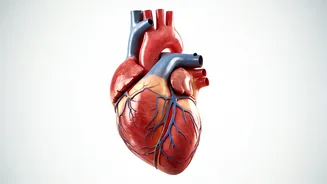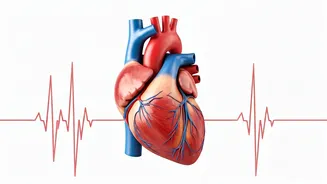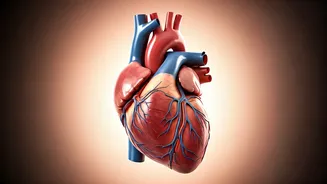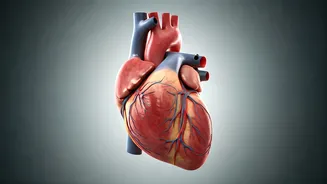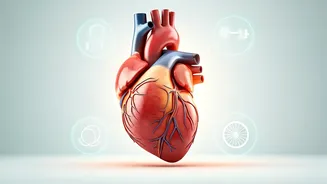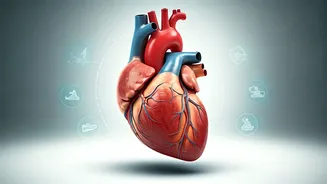Walking: Simple Start
Walking is a universally accessible activity, perfect for enhancing cardiovascular health. Begin with a comfortable pace, gradually increasing the duration
and intensity as your fitness improves. A brisk walk elevates the heart rate, improving circulation and burning calories. Aim for at least 30 minutes of walking most days of the week. This activity requires no special equipment, making it an easy addition to your routine. Regular walking reduces the risk of heart disease, stroke, and other chronic ailments. Consider incorporating varied terrains like hills or stairs to boost the workout's intensity and effectiveness. Maintain good posture, keep your core engaged, and swing your arms naturally for added benefits. Walking's adaptability means you can do it anywhere, making it a sustainable and practical exercise choice for long-term heart health.
Swimming: Gentle Exercise
Swimming presents an excellent low-impact workout, placing minimal stress on the joints while providing a full-body cardiovascular workout. The buoyancy of water supports your weight, making it an ideal choice for individuals with joint pain or other physical limitations. Swimming enhances endurance, tones muscles, and boosts cardiovascular health by increasing heart rate and improving oxygen utilization. Vary your strokes to target different muscle groups and keep the workout engaging. Even gentle swimming, like water aerobics, provides significant benefits. Start with short durations and gradually increase the swimming time as your fitness progresses. Regular swimming can lead to lower blood pressure, improved cholesterol levels, and reduced stress. It offers a refreshing and enjoyable way to maintain and improve overall health, making it a great option for people of all ages.
Cycling: Heart-Boosting Activity
Cycling is a fantastic cardio exercise, strengthening the heart and improving overall cardiovascular fitness. This activity is adaptable, offering different levels of intensity based on your pace and the terrain. Whether outdoors or on a stationary bike, cycling engages major muscle groups, promoting calorie burning and enhancing endurance. Regular cycling reduces the risk of heart disease, improves blood circulation, and lowers blood pressure. Begin with shorter rides and gradually increase the duration and intensity. Ensure proper bike fit to prevent injuries. Cycling is a sustainable and eco-friendly way to exercise and enjoy the outdoors, promoting both physical and mental well-being. Consider cycling in intervals to maximize calorie burn and improve cardiovascular health. Cycling regularly contributes to improved cardiovascular health and overall vitality.
Yoga: Mind-Body Connection
Yoga offers a combination of physical postures, breathing exercises, and meditation, all of which contribute to heart health. It improves flexibility, strengthens muscles, and reduces stress levels. Yoga's calming effect can lower blood pressure and heart rate. Certain yoga poses like the downward-facing dog and the warrior poses can strengthen the heart. Yoga enhances body awareness and promotes mindfulness, creating a sense of overall well-being. There are various styles of yoga, ranging from gentle Hatha to more dynamic Vinyasa, offering options for all fitness levels. Regular yoga practice has been associated with decreased risk factors for heart disease and improved mental health. Start with beginner-friendly classes and gradually explore more advanced poses as your strength and flexibility improve. Integrating yoga into your routine can lead to holistic health benefits.
Tai Chi: Gentle Movement
Tai Chi involves slow, flowing movements and deep breathing, making it a gentle yet effective form of exercise for heart health. This ancient practice improves balance, coordination, and muscle strength. It also reduces stress, lowers blood pressure, and improves overall cardiovascular function. The meditative aspect of Tai Chi promotes relaxation and mental clarity. Regular practice can enhance cardiovascular health and improve mood. Tai Chi is suitable for people of all ages and fitness levels, including those with physical limitations. It involves mindful movements that can be easily incorporated into daily life. Tai Chi helps improve blood circulation and encourages overall relaxation. These mindful movements can be practiced almost anywhere, making it a convenient way to boost heart health and well-being.
Strength Training: Strong Heart
Strength training, even with light weights or bodyweight exercises, can significantly benefit heart health. It strengthens muscles, increases metabolism, and improves cardiovascular function. Strength training helps to manage weight, lower blood pressure, and improve cholesterol levels. Aim to include exercises that target all major muscle groups. Start with manageable weights and gradually increase the resistance as you gain strength. Proper form is crucial to prevent injuries. Incorporating strength training a few times a week can lead to substantial improvements in heart health. Strength training aids in better cardiovascular health by boosting metabolism and reducing risks like high blood pressure and cholesterol. Regular strength training sessions can be easily incorporated into your fitness regime, enhancing both your physical strength and your heart health.
Dancing: Fun Cardio
Dancing is a fun and engaging form of cardio that significantly contributes to heart health. It elevates your heart rate, improves endurance, and strengthens the cardiovascular system. Whether you enjoy ballroom, salsa, or any other style, dancing is an enjoyable way to burn calories and reduce stress. Dancing improves coordination, balance, and flexibility. Regular dancing can lower blood pressure, improve cholesterol levels, and boost overall mood. Consider taking dance classes or dancing at home with music you enjoy. Dancing is an excellent way to socialize and maintain an active lifestyle. Integrating dancing into your routine can add enjoyment to your exercise, contributing to both physical and mental well-being. Dancing regularly can lead to improved heart health, making it a fantastic addition to your fitness plan.


